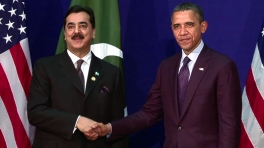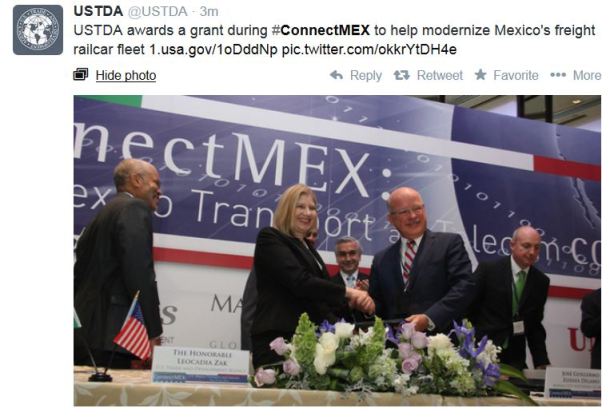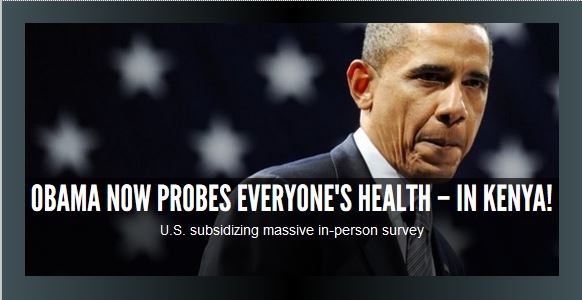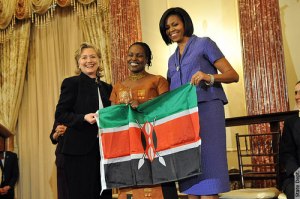My latest from WND — S.P.
Archive for the ‘White House’ Category
Why Washington Can’t Stop its Evil Ways (WND)
Posted: June 29, 2014 in Corruption and Waste, U.S. House, U.S. Senate, U.S. State Dept., USAID, White House, WNDTags: Appropriations Committee, foreign aid, FY 2015, House Committee on Appropriation, House of Representatives, Obama, President Obama, U.S. House Committee on Appropriation
Obama Spending $140M to Assess Pakistan Aid Program
Posted: June 10, 2014 in Corruption and Waste, Pakistan, USAID, White House, WNDTags: $140 million, Federally Administered Tribal Areas, Islamic Republic of Pakistan, Karachi, Khyber Pakhtunkhwa, Management Services International, Pakistan, PERFORM, Performance Management Support, Steve Peacock, U.S. Agency for International Development, USAID, WND, WND.com
 Tab for taxpayers to pay for 'performance-monitoring support'
Tab for taxpayers to pay for 'performance-monitoring support'
While the flow of billions of America taxpayer dollars to the Islamic Republic of Pakistan has slowed during President Obama’s second term, his administration nonetheless will put $140 million into a project to figure out how to help “increase stability, democracy, and prosperity for the men and women” of that nation.
Private contractors will reap the windfall of an aid-effectiveness assessment known as the Performance Management Support, or PERFORM, initiative, which simultaneously seeks to determine whether Obama has accomplished anything thus far in Pakistan.
The U.S. Agency for International Development, or USAID, is tasked with conducting the PERFORM endeavor, for which contractors will provide “performance-monitoring support” of existing assistance programs.
The step comports with existing USAID policy stemming from requirements in the Enhanced Partnership with Pakistan Act of 2009 that the agency determine if government clients are effectively and efficiently carrying out their contractual obligations.
USAID/Pakistan currently maintains in-house staff to monitor the program effectiveness, particularly in high-threat and security restricted areas such as Karachi, Federally Administered Tribal Areas and Khyber Pakhtunkhwa.
According to the project Statement of Work, for the agency employees to satisfy their contractor-oversight responsibilities, additional contractors are needed to obtain “performance monitoring data.” The aim of the five-year, $140 million PERFORM initiative, therefore, is to obtain that data.
USAID then will use the information to identify existing program problems and to devise project improvements and adaptations. It also will leverage the data “to inform new project designs.”
The agency separately is evaluating the effectiveness of “highly specialized management information system and geospatial information system,” or MIS/GIS, services that a contractor is providing to USAID/Pakistan.
The MIS/GIS initiative will help the agency to track more closely 90 active contracts – valued at more than $1.9 billion – that USAID/Pakistan currently manages.
Management Services International received a six-month, non-competitive contract extension to perform the work, raising the contract ceiling from $11.7 million to $23.7 million.
The administration’s FY 2015 budget request for Pakistan aid is $881.8 million – significantly less than the nearly $2.4 billion sought and congressionally appropriated in FY 2011.
Peace and Security operations comprise $399.2 million of the FY 2015 total, with the remainder slated for Economic Development ($276 million); Health ($80 million); Democracy, Human Rights and Government ($76.6 million); and Education and Social Services ($50 million).
Included in the category of Peace and Security operations is State Department training through its Anti-Terrorism Assistance Program, or ATA. As U.S. Trade & Aid Monitor's Steve Peacock recently discovered, the State Department purchased hundreds of pounds of plastic explosives and thousands of containers of liquid explosives, which it claimed it would use in the training of ATA partner nations such as Pakistan.
It is unclear, however, which assistance category applies to the administration’s production of a Pakistani-themed video depicting national icon Uncle Sam as a bloodthirsty cannibal.
Similarly, an Obama plan to change Pakistan’s culturally embedded mistreatment of women and girls might fall under several budget categories.
Other recently launched USAID/Pakistan endeavors include the Khyber Pakhtunkhwa Governance Project, a four-year $24 million program that seeks to improve the ability of that provincial government to provide public services to its citizens.
The Commercial Agriculture Project, which likewise is a four-year $24 million program, will help “improve the ability of Pakistan’s agriculture and livestock sectors to meet both international and domestic demand.”
USAID/Pakistan also recently revealed that it will spend about $17 million to perform an “environmental and social impact assessment” of the proposed Diamer Bhasha Dam Project.
The official justification for U.S. assistance to Pakistan focuses on the pursuit of “robust continued security and civilian assistance that contributes to a more secure, stable, tolerant, democratic, and prosperous Pakistan.”
The broader aim is to “make the region safer and also contribute to U.S. security.”
This article originally was published June 8 via WND.com. Under agreement with WND, rights have reverted back to its author, Steve Peacock.
Feds Holds Another Handout Summit
Posted: June 6, 2014 in Corruption and Waste, Mexico, USTDA, White House, WNDTags: ConnectMEX, Mexico City, Obama, Resource Guide for U.S. Industry on Priority Infrastructure Projects, U.S. Trade & Development Agency, U.S.-Mexico Transport and Telecom Conference, USTDA, White House
New guide for corporations, foreigners to game U.S. taxpayers
Kaboom! State Dept. finally gives explosive answer (via WND)
Posted: May 27, 2014 in Afghanistan, Benghazi, Indonesia, International, Iraq, Jordan, Kenya, Law Enforcement/Police Issues, Philippines, Syria, Terrorism, U.S. House, U.S. State Dept., White House, WNDTags: Benghazi, embassies, liquid explosives, plastic explosives, State Department, Under Secretary of State for Management Patrick F. Kennedy
My latest article gets top-of-the-page visibility. See “Kaboom! State Dept. finally gives explosive answer” via WND. — S.P.
Bureau boss overseeing shipments has Benghazi connections
The State Department bureau tasked with secretly sending to embassies plastic and liquid explosives operates under the guidance of Under Secretary of State for Management Patrick F. Kennedy, whom a congressional panel last year separately found to be largely responsible for security lapses in Benghazi, WND has learned.
A series of WND articles recently exposed the purchase and international transport of many hundreds of pounds of plastic, sheet and linear explosives along with thousands of containers of high-energy liquid explosives.
Weeks after a State official laughed in response to WND’s inquiry, the department belatedly reacted to a follow-up request for information about how, where and by whom the blasting equipment will be used.
Read more at WND.com…
Related articles
Obama now probes everyone’s health – in Kenya! (WND)
Posted: April 6, 2014 in Africa, Health-Medicine, United Nations, USAID, White House, WNDTags: foreign aid, foreign assistance, health, kenya, nairobi, Obama, survey, U.S. Agency for International Development, USAID, WND. WND.com
In the latest addition to the Obama administration’s growing aid-to-Kenya portfolio, the U.S. will help subsidize a nationwide citizen-health assessment in every Kenyan county without exception.
While the estimated project cost remains undisclosed, a separate Kenya-based trade-promotion project unveiled late last week came with an additional $70 million price tag.
The Kenya National Bureau of Statistics, with U.S. taxpayer help, will implement the 2014 Kenya Demographic and Health Survey, or KDHS.
Kenya will coordinate the efforts with United Nations agencies, the U.S. government and “other partners.” The U.S. will fund a KDHS requirement to deploy contractor caravans across the entirety of this East African nation of 45 million.
Read more at WND.com…
A conversation with Ron Paul: Meddling in affairs of foreign nations
Posted: March 28, 2014 in Commentary, International, U.S. State Dept., Ukraine, White HouseTags: foreign, foreign aid, politics, Ron Paul, taxpayer dollars, Ukraine
Commentary on Joseph Farah’s editorial “Obama really is helping his country”
Posted: March 19, 2014 in Africa, Kenya, USAID, White House, WNDTags: Joseph Farah, kenya, Obama really is helping his country, U.S. Agency for International Development, USAID, WND, WND.com
What a thrill it was to read yesterday's editorial by Joseph Farah, founder, editor and CEO of WND, on his publication's extensive coverage of Obama admininistration assistance to Kenya — Barack Obama's "home country," as the First Lady once referred to the African nation.
I have been blessed with the chance to write the bulk of those articles via WND.com.
Mr. Farah clearly has recognized the value of this unparalleled coverage of "rapidly and exponentially" increasing USAID programs in Kenya.
Indeed, it was precisely U.S. Trade & Aid Monitor's coverage of other U.S. government foreign-assistance initiatives that caught the attention of Mr. Farah when I first launched the Monitor in 2011, consequently leading to an ongoing publishing relationship with the WND organization.
It is with much gratitude to Mr. Farah — as well as to News Editor Bob Unruh — for the chance to regularly contribute to WND, which has the guts to take on issues the mainstream media often does not have the wherewithal or the chutzpah to pursue.
U.S. Government: Americans are ‘Killer Zombies’ (WND)
Posted: March 18, 2014 in Broadcasting Board of Governors, Pakistan, Propaganda/PR, White HouseTags: Broadcasting Board of Governors, Pakistan, Uncle Sam, VOA, Voice of America, Zindagi 360, zombie, zombies
My latest from WND. — S.P.
A bloodthirsty zombie version of the Uncle Sam character bites the neck of a foreign man in a promotional video the Obama administration is using to catch the attention of Pakistani youth.
Voice of America, through a local cable company, currently distributes “Zindagi 360,” a program VOA uses to target young adults in Pakistan, but the U.S. Broadcasting Board of Governors is setting its sights higher.
BBG now is aiming for a Pakistan-wide broadcast of the show, which “focuses on topics that resonate with young people in Pakistan,” such as music and “life in America.”
The topics apparently include the stars-and-stripes-adorned killer-zombie adaptation of Uncle Sam, the traditional personification of the American government.
While the promo clearly is intended to be humorous, if not satirical, BGB is using it as a calling card in its search for a distributor capable of spreading its message.
Continued at WND.com…
Obama Moves to Protect Taxpayers … in Kenya! (WND)
Posted: March 12, 2014 in Africa, Finance, USAID, White House, WNDTags: Africa, DAI, Development Alternatives Inc., Financial Inclusion for Rural Microenterprises, FIRM, kenya, Obama, U.S. Agency for International Development, USAID
My latest from WND.com.. – S.P.
The Obama administration is infusing millions of additional dollars into the stabilization and strengthening of county governments across Kenya to protect taxpayers there by having Americans foot the bill.
Without opening the endeavor to competitive bidding, the U.S. Agency for International Development simply changed the terms of an existing Kenya aid program and put more money into it.
Kenyans had been facing additional financial costs for their own local governments before the agency extended the contract by assigning new responsibilities to Development Alternatives Inc., or DAI. But the change by USAID means that Americans, not Kenyans, will be on the hook for an additional $4.5 million for the Financial Inclusion for Rural Microenterprises, or FIRM, project
“These costs include approximately $3 million in technical assistance that FIRM would provide which the individual counties would be forced to incur without the extension,” the agency said in a Justification and Approval for Limiting Sources document that WND obtained through routine database research.
Continued at WND.com…








